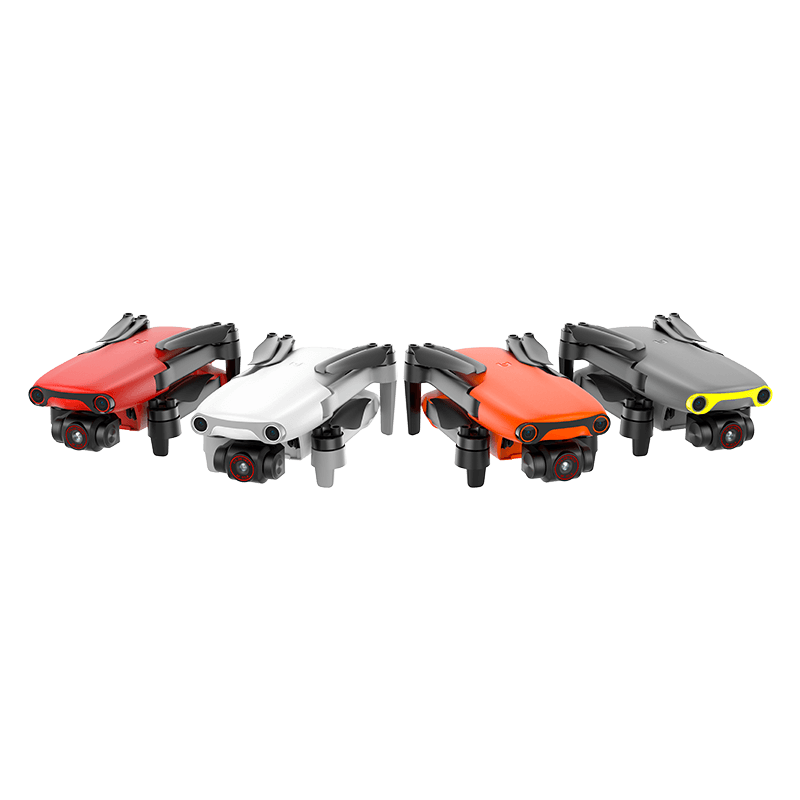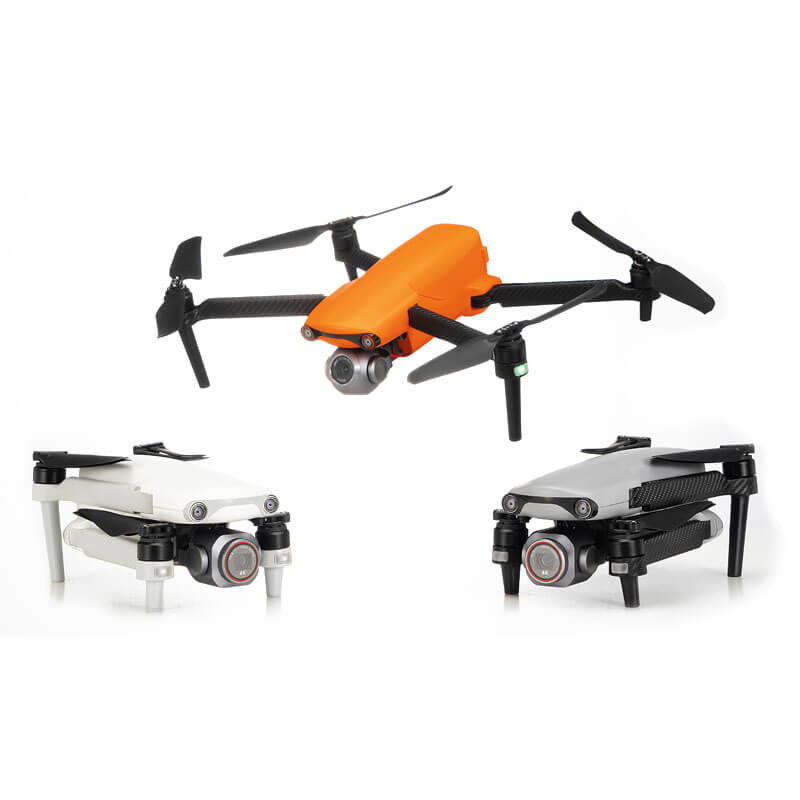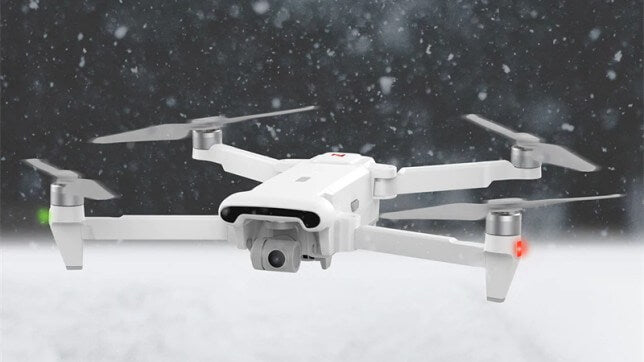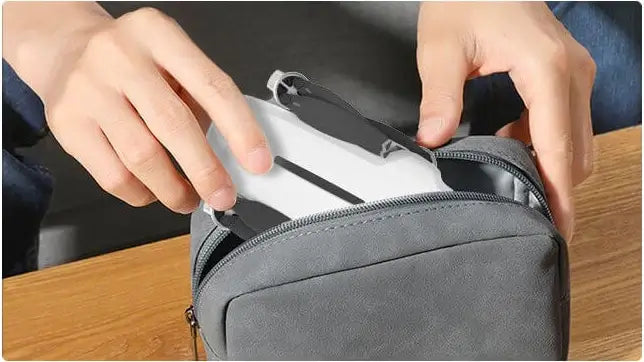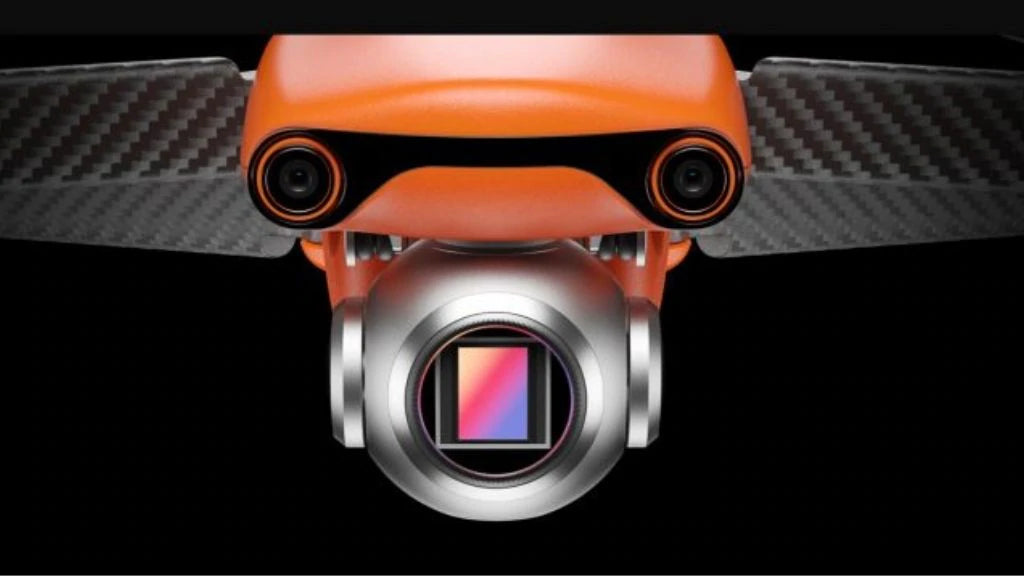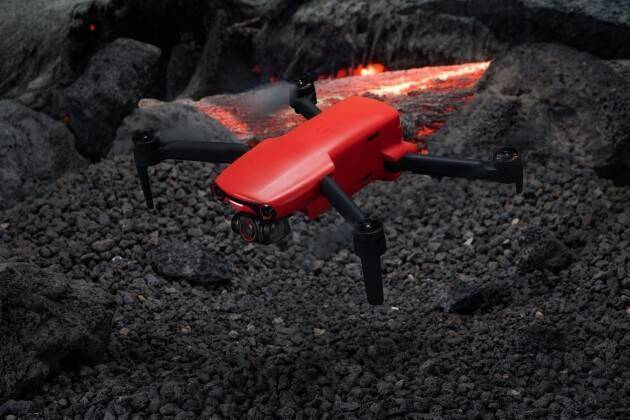Autel Nano Plus Drone: Camera Mini Drone
The Autel Nano Plus is impressive for a number of reasons - the most important being that it's an excellent 4K drone that proudly says "Made in the USA" on the label. This award-winning drone also weighs under 250 grams, but still features a 48-megapixel camera and 1/1.28-inch sensor. Capable of shooting HDR 4K video, the camera sits on a 3-axis gimbal for smooth and stable footage. It's also equipped with object detection and collision avoidance protocols that can track objects and photograph them in a variety of styles, all while teleporting footage from 6.2 miles away to your smartphone... When done, the Autel EVO Nano+ folds up and slides in your pocket.

For such a small drone, the EVO Nano Plus features a huge 1/1.28-inch CMOS sensor. It can shoot 4K and RAW images, which makes it a capable camera drone. Its advanced PDAF + CDAF autofocus system can track fast-moving objects such as vehicles, people, and even animals. The F/1.9 low aperture lens helps in low light without adding too much ISO noise.
With HDR mode enabled, you can extract rich detail from shadows and highlights, no matter how difficult the lighting conditions. Defog mode for better image quality in rainy or hazy environments.
While the EVO Nano+ is advertised at 50 MP (8192×6144) resolution, I managed to get only 4096×302 (4:3) or 3840×2160 (16:9) photos. 50MP photo mode may be enabled in a future firmware update. It has four panorama modes: spherical, wide-angle, landscape and vertical.
The Autel EVO Nano+ has no internal storage, but relies on an SD card, which is more convenient as it is removable and upgradeable (supports up to 256GB/requires UHS-3 rating).
Camera Specifications
| Image sensor CMOS: | 1/1.28 inch |
| Effective Pixels: | 50MP |
| Pixel size: |
2.44μm*2.44μm (Bin2) |
| Lens FOV: | 85° |
| Equivalent focal length: | 23mm |
| Aperture: | f/1.9 |
| Focus range: |
0.5m ~ ∞ |
|
Focus Mode: |
PDAF+CDAF/MF |
|
Shooting mode Auto mode (P file): |
EV adjustable, ISO/shutter auto |
|
Manual mode (M file): |
ISO/shutter adjustable, EV not adjustable |
|
Shutter priority (S file): |
Shutter/EV adjustable, ISO automatic |
|
ISO range Video: |
ISO100 ~ ISO6400 |
|
Photo: |
ISO100 ~ ISO6400 |
| Shutter Speed Photo Mode: | 1/8000 ~ 8s |
| Others: | 1/8000 ~ 1/frame rate |
|
Portrait blur |
Real-time image transfer portrait blur and photo portrait blur |
| Zoom range | Digital zoom 1~16 times |
| Photo format | JPG(8bit) / DNG(10bit) / JPG+DNG |
| Photo resolution | 50MP: 8192×6144 (4:3) 12.5MP: 4096×3072 (4:3) 4K: 3840×2160 (16:9) |
| Photo shooting mode |
Single shot |
| Video encoding format | H265/H264 |
| Video resolution |
3840×2160 p30/25/24 HDR: |
| Maximum bit rate |
100Mbps |
|
Timelapse |
Video: 4K P25 |
| Panorama |
Horizontal/Vertical/Wide/Spherical |
| Wireless transfer | 20MB/sec |
Autel Nano+ drones have built-in cinematic lenses to help you quickly create Hollywood-style edits. Rocket, Fade Away, Orbit and Flick are the four models also offered by its larger, almost twice as expensive sibling, the Autel EVO Lite. In contrast, the DJI MINI 2's QuickShoot modes include Dronie, Helix, Rocket, Circle, and Boomerang. The Flick mode is unlike any other mode I've tested before. It starts recording from the back of the subject, rotates 180°, and walks to the front of the subject.

